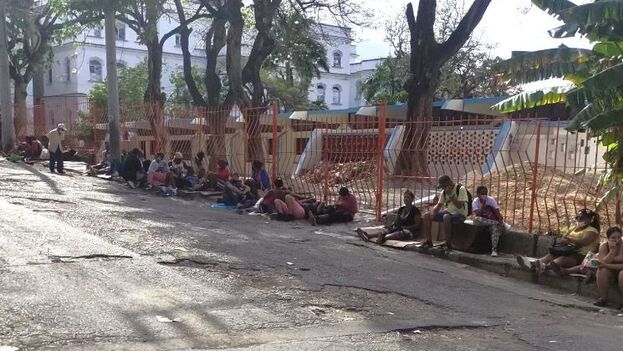
![]() EFE/14ymedio, Havana, 15 December 2022 — On Thursday, the Economic Commission for Latin America and the Caribbean (ECLAC) listed Cuba as one of the countries in the region with the worst economic projection for 2023. With only 1.5% growth, the forecast of this United Nations agency is not as optimistic as the Cuban Government’s, which assured that next year the country’s GDP would grow by 3%.
EFE/14ymedio, Havana, 15 December 2022 — On Thursday, the Economic Commission for Latin America and the Caribbean (ECLAC) listed Cuba as one of the countries in the region with the worst economic projection for 2023. With only 1.5% growth, the forecast of this United Nations agency is not as optimistic as the Cuban Government’s, which assured that next year the country’s GDP would grow by 3%.
The ECLAC forecast represents, in itself, a decrease in its forecasts for Cuba: its latest report, in October, had placed the increase in the Island’s GDP for 2023 at 1.8%. The regime’s analysts, of course, rejected this number.
Cuba is not the only country whose GDP will decline next year. ECLAC has pointed out that a group of Latin American nations is in a similar situation. The GDPs that will grow the least next year are, according to the organization: El Salvador (1.6%), Colombia (1.5%), Mexico (1.1%), Argentina (1%), Brazil (0.9%), Haiti (-0.7%), and Chile (-1.1%).
ECLAC guaranteed that the economic slowdown in the region will deepen in 2023 and that the growth rate will be 1.3%, 0.1% less than estimated in October. Regional GDP, it estimates, will close this year with an expansion of 3.7%, higher than the 3.6% forecast three months ago but far from the 6.7% recorded in 2021.
According to ECLAC, the slowdown began in the second half of 2022 and reflects both “the exhaustion of the rebound effect on the 2021 recovery” and “the effects of restrictive monetary policies, greater limitations on fiscal spending, lower levels of consumption and investment, and the deterioration of the external context.”
“The monetary policy responses adopted worldwide, in a context of increased global inflation, have led to increases in financial volatility and risk aversion levels and, therefore, have induced lower capital flows to emerging economies,” the institution said.
In the Preliminary Balance of the Economies of Latin America and the Caribbean 2022 presented this Thursday, ECLAC points out, however, that “the expected reduction in global inflation by 2023 will tend to moderate the increases in the monetary policy rates of the main central banks.”
The report also highlights that the process of recovering labor markets “has not made it possible to eliminate the traditional gaps between men and women,” and that during 2022, ” an increase in unreliability as well as a drop in real wages have been observed.”
In addition, debt levels continue to be high, “so it can be expected that the fiscal space will continue to condition the trajectory of public spending.”
“The risk of rising interest rates, depreciation of currencies and increased sovereign risk would make it difficult to finance governments’ operations by 2023,” the agency added.
To avoid a new lost decade such as that observed during the period 2014-2023, ECLAC calls for “innovative public policies in the productive, financial, commercial, social and care economy.”
Venezuela (12%), Panama (8.4%) and Colombia (8%) will lead economic growth this year, followed by Uruguay (5.4%), the Dominican Republic (5.1%) and Argentina (4.9%), according to the report.
In the middle of the table are the Caribbean islands (4.5%, not counting Guyana, which is experiencing an oil boom), Costa Rica (4.4%), Honduras (4.2%), Guatemala (4%), Nicaragua (3.8%), Bolivia (3.5%), Mexico (2.9%) and Brazil (2.9%).
In the line are Ecuador (2.7%), Peru (2.7%), El Salvador (2.6%), Chile (2.3%), Cuba (2%), Paraguay (-0.3%), and Haiti (-2%), according to the balance sheet.
For 2023, Venezuela continues to lead the projections (5%), followed by the Dominican Republic (4.6%), Panama (4.2%), Paraguay (4%), the Caribbean Islands (3.3%), Guatemala (3.2%), Uruguay (2.9%), Bolivia (2.9%), Honduras (2.7%), Costa Rica (2.6%), Peru (2.2%), Nicaragua (2.1%) and Ecuador (2%).
Translated by Regina Anavy
____________
COLLABORATE WITH OUR WORK: The 14ymedio team is committed to practicing serious journalism that reflects Cuba’s reality in all its depth. Thank you for joining us on this long journey. We invite you to continue supporting us by becoming a member of 14ymedio now. Together we can continue transforming journalism in Cuba.
